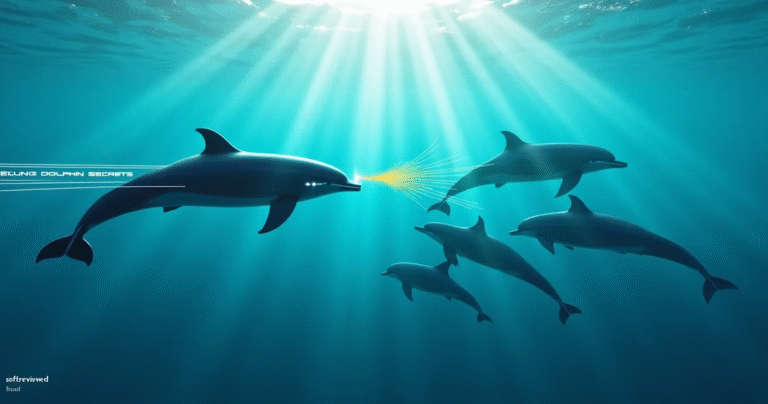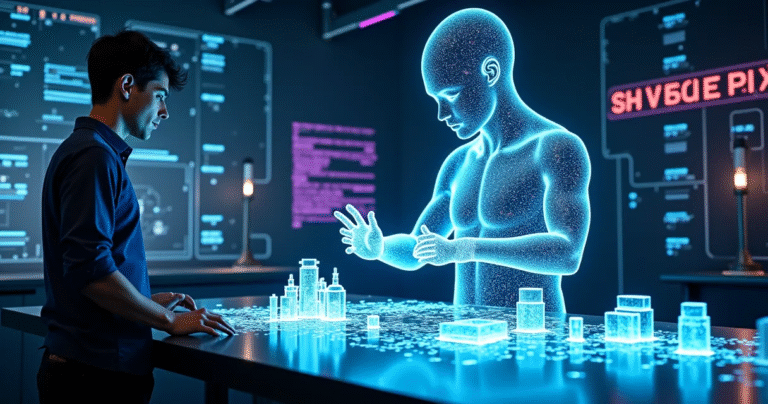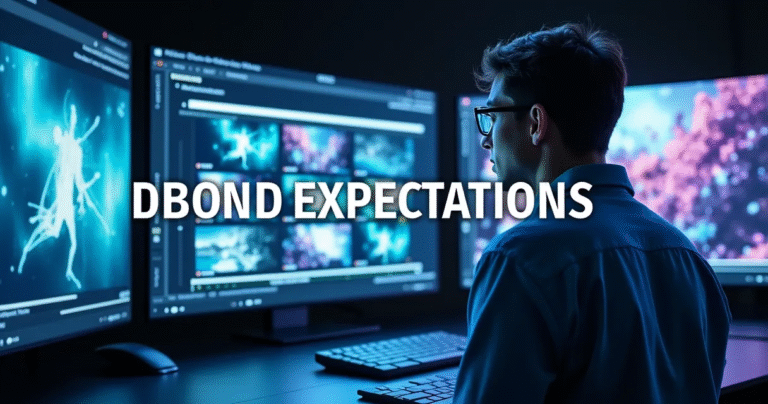🐬 AI Decoding Dolphin Language
Groundbreaking AI technology is revolutionizing our understanding of dolphin communication, potentially opening a pathway to cross-species dialogue.
🔊 AI Decodes Dolphin Sounds via Sequence Prediction
Advanced models approach dolphin vocalizations like human language, predicting the next sounds in sequences through sophisticated pattern recognition systems. This breakthrough technique treats dolphin whistles and clicks as structured communication, similar to how language models understand human speech patterns.
⚙️ Leverages Google’s SoundStream Tokenizer + 400M Parameters
The technology processes complex dolphin whistles and clicks through optimized acoustic encoding, using Google’s SoundStream tokenizer paired with a lightweight model architecture containing 400 million parameters. This specialized design enables efficient field deployment while maintaining computational power.
🧩 Identifies Hidden Communication Patterns
This AI system detects recurring acoustic clusters and behavioral labels in wild dolphin interactions, significantly reducing the need for manual analysis. By identifying patterns invisible to human observers, the technology maps relationships between specific sounds and observable dolphin behaviors.
📱 Runs on Pixel Phones for Real-time Field Use
Mobile deployment enables marine biologists to analyze dolphin vocalizations in real-time during observatory missions. The system’s optimization for Pixel phones brings advanced AI capabilities directly to researchers in the field, eliminating the delay between data collection and analysis.
🗣️ Aims to Build Shared Vocabulary with Dolphins
The ultimate goal is to enable interactive communication by translating synthesized sounds into referenceable objects. This revolutionary approach could create a shared vocabulary between humans and dolphins, potentially allowing meaningful cross-species dialogue for the first time in history.
Imagine a world where we could understand the complex communication of dolphins. Google, in collaboration with researchers at Georgia Tech and the Wild Dolphin Project (WDP), is making strides toward this reality with Dolphin Gemma, a groundbreaking AI model designed to decipher dolphin vocalizations. This article explores how Dolphin Gemma works, its potential impact, and the exciting possibilities it unlocks for interspecies communication. Dolphin Gemma, an AI trained to understand dolphin sounds, promises a new era of understanding in marine biology.🐬
Whispers of the Sea: Why Study Dolphin Communication?
Dolphins are highly intelligent creatures with sophisticated communication systems. They use a variety of clicks, whistles, and burst pulses to convey information, navigate their environment, and maintain social bonds. Understanding these vocalizations can provide insights into their social structure, behavior, and cognitive abilities.
- 📌 Gaining insight into dolphin social structures.
- 📌 Understanding their cognitive capabilities.
- 📌 Improving conservation efforts.
For decades, scientists have painstakingly analyzed dolphin sounds, but the process is time-consuming and challenging. AI offers a powerful tool to accelerate this research, potentially revealing patterns and subtleties that humans might miss.
From Sound Waves to Understanding: How Dolphin Gemma Works
Dolphin Gemma is a large language model (LLM) specifically designed for audio analysis. Unlike traditional LLMs that process text, Dolphin Gemma processes audio tokens representing dolphin sounds. The model is built upon the foundation of Google's Gemma models and shares architectural similarities with the Gemini chatbot.
Here's a breakdown of how it works:
- Data Collection: The Wild Dolphin Project has been collecting audio and video recordings of Atlantic spotted dolphins in their natural habitat for over 40 years, creating a vast database of dolphin vocalizations linked to specific behaviors.
- Sound Tokenization: Dolphin Gemma utilizes Google's SoundStream tokenizer to efficiently represent dolphin sounds as discrete tokens.
- Pattern Recognition: The model processes sequences of these tokens to identify patterns, structures, and relationships within the vocalizations.
- Prediction: Like a language model predicting the next word in a sentence, Dolphin Gemma predicts the likely subsequent sounds in a dolphin communication sequence.
The model architecture uses transformer layers optimized for audio, including causal attention to predict the next token in a sequence. With approximately 400 million parameters, Dolphin Gemma is relatively lightweight, making it suitable for deployment in the field.
Pixel Power: AI in the Wild, Powered by Google

One of the most remarkable aspects of Dolphin Gemma is its ability to run on Google Pixel phones. Researchers at WDP are using waterproof Pixel phones to record dolphin sounds and process them in real-time using the Dolphin Gemma model.
✅ Real-time analysis in the field.
✅ Reduced reliance on custom hardware.
✅ Improved portability and cost-effectiveness.
This allows for immediate feedback and analysis during expeditions, accelerating the research process. The use of readily available technology like Pixel phones makes the system more accessible and sustainable for long-term studies. According to Google, an upcoming generation of Google Pixel phones (the Pixel 9) will further advance these research efforts.
Decoding the Deep: Unveiling Dolphin Language's Nuances
Dolphin sounds fall into specific categories, such as whistles, squawks, and clicking buzzes, each potentially linked to different contexts and behaviors. By analyzing these sounds, researchers can detect patterns and structure, just like human language.
Dolphin Gemma is helping to uncover these nuances:
- Signature Whistles: Identifying signature whistles linked to individual dolphins.
- Behavioral Patterns: Recognizing vocalizations associated with play, hunting, or social interactions.
- Contextual Understanding: Linking sounds to specific situations and environmental factors.
The ultimate goal is to understand the grammatical rules and patterns that might signify a form of language, bringing us closer to deciphering the meaning behind dolphin communication.
How Can AI Assistants Like Dolphin Gemma Enhance Communication in Future AI Technologies?
AI assistants like Dolphin Gemma can revolutionize communication by leveraging natural language processing and voice recognition. By understanding context and emotion, these technologies can create more engaging interactions. With anthropic’s new voice assistant unveiled, the landscape of conversational AI sets the stage for seamless and intuitive exchanges in future innovations.
A Symphony of Science: Collaboration and Open-Source Spirit
The Dolphin Gemma project exemplifies the power of collaboration between researchers, technologists, and conservationists. The Wild Dolphin Project's decades of data collection, combined with Google's AI expertise, has created a unique opportunity to advance our understanding of dolphin communication.
Google plans to release Dolphin Gemma as an open-source model in mid-2025. This will allow researchers worldwide to fine-tune the model for new species or behaviors, fostering further innovation and discovery. You can find more information about Google's Gemma models on their official website.
| Feature | Description |
|---|---|
| Model Type | Large Language Model (LLM) for audio analysis |
| Training Data | 40+ years of acoustic data from the Wild Dolphin Project's Atlantic spotted dolphins |
| Architecture | Based on Google's Gemma series and Gemini chatbot architecture, Transformer layers optimized for audio |
| Parameter Size | ~400 million parameters |
| Deployment | Runs on Google Pixel phones for real-time field analysis |
| Open Source | Planned release as an open-source model in mid-2025 |
Beyond Translation: The Broader Implications of Interspecies Communication
The potential benefits of understanding dolphin communication extend far beyond scientific curiosity. By gaining insights into their needs and behaviors, we can improve conservation efforts and protect these intelligent creatures.
Furthermore, the technology developed for Dolphin Gemma could be applied to other animal communication research, potentially unlocking the secrets of other species. This could revolutionize our understanding of the natural world and our relationship with it.
- ✅ Improved Conservation: Better understanding of dolphin needs and behaviors for more effective conservation strategies.
- ✅ Cross-Species Applications: Potential to apply the technology to research on other animal communication systems.
- ✅ Ethical Considerations: Raising awareness and promoting responsible interactions with marine life.
Chatting with Cetaceans: The Future of AI and Animal Interaction
The Dolphin Gemma project is a significant step toward bridging the communication gap between humans and dolphins. While true two-way communication may still be a distant goal, the progress made so far is remarkable.
With continued research and development, AI could play an increasingly important role in understanding and interacting with animals. This could lead to new ways of protecting endangered species, managing ecosystems, and fostering a deeper appreciation for the intelligence and complexity of the natural world. Imagine a future where we can truly "chat" with cetaceans, gaining invaluable insights into their lives and perspectives. 🚀
DolphinGemma AI: Technical Specifications & Applications
This visualization illustrates key components of the DolphinGemma AI system, highlighting how its 400M parameter model processes and analyzes dolphin vocalizations across different research applications.







